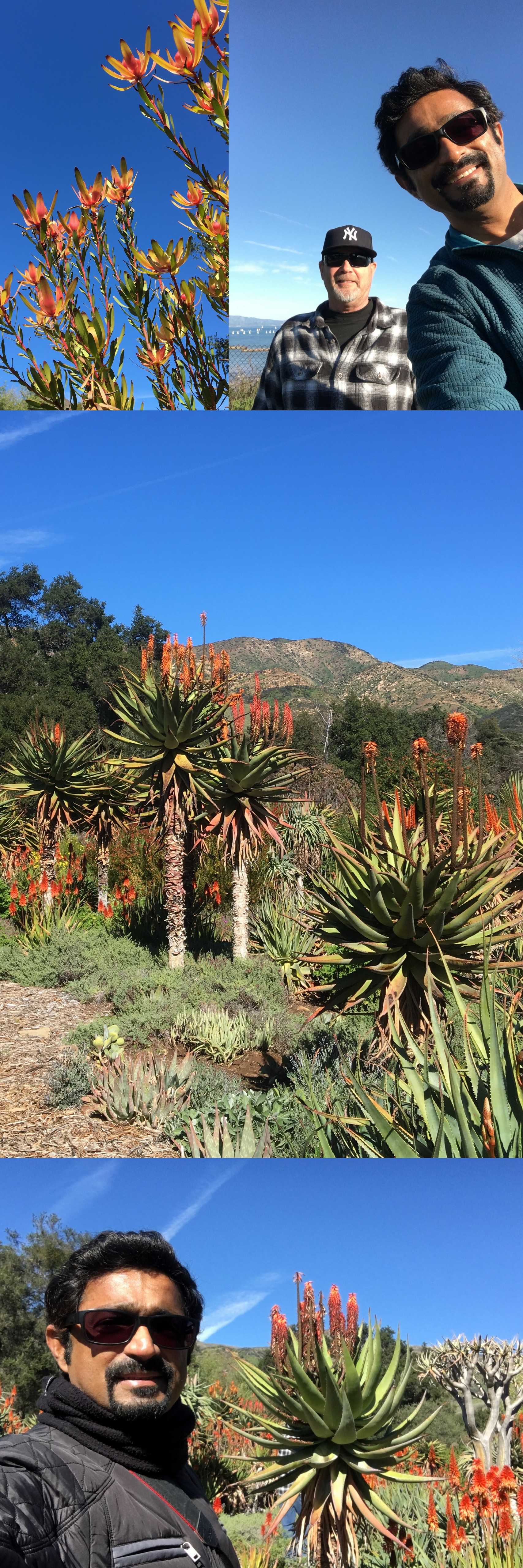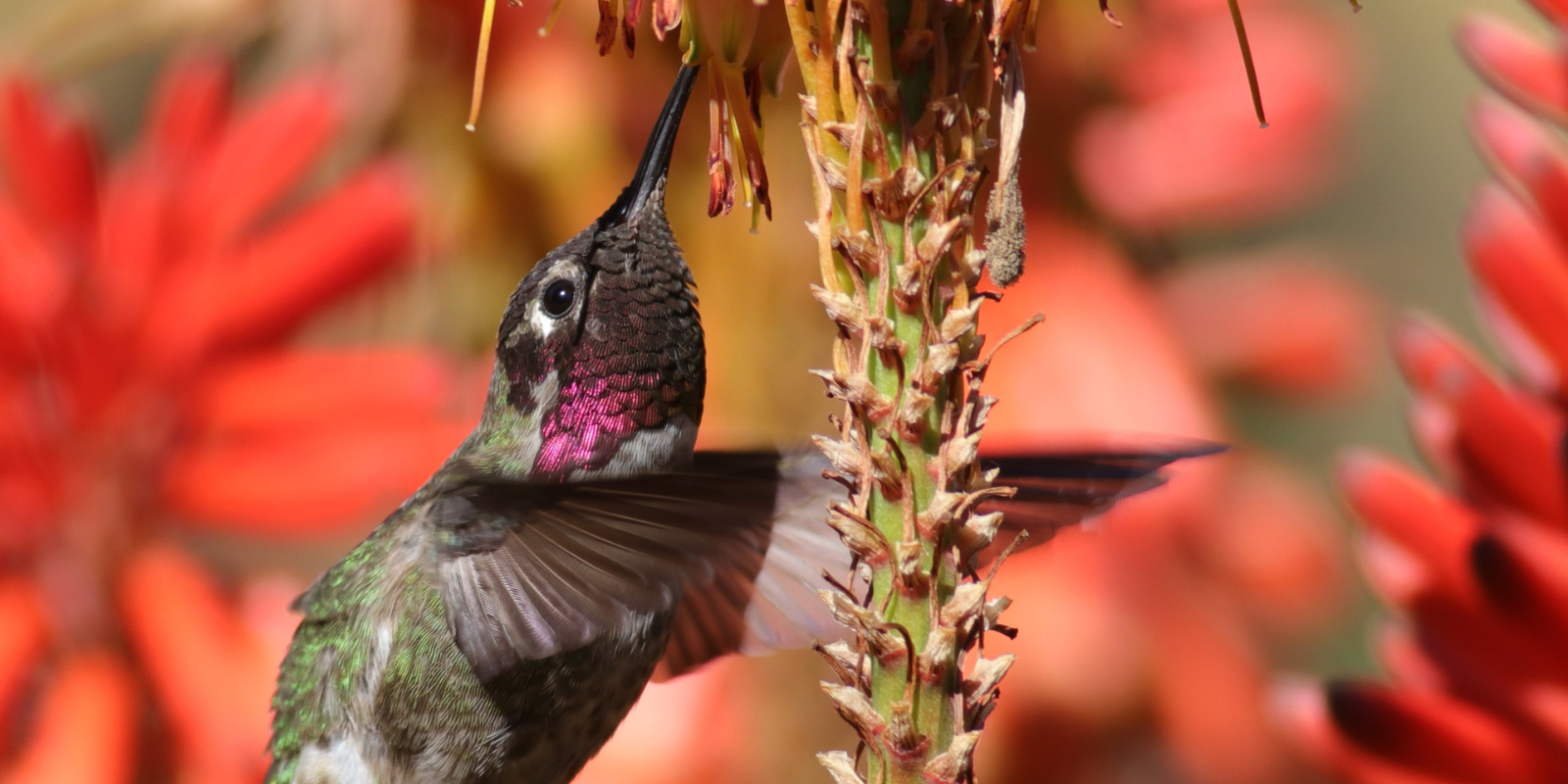

Subhamoy Das
As I stood in the bright and serene gardens of Ojai, near Ventura, California, my camera poised and ready, I couldn't help but marvel at the tiny, iridescent creature hovering before me. The Anna's Hummingbird, a jewel of Southern California's avian world, darted from flower to flower with an agility that seemed to defy physics. My friend and ace photographer, Jeff Cartier, who got me here, stood nearby, his own camera clicking rapidly as we attempted to capture the essence of these remarkable birds.
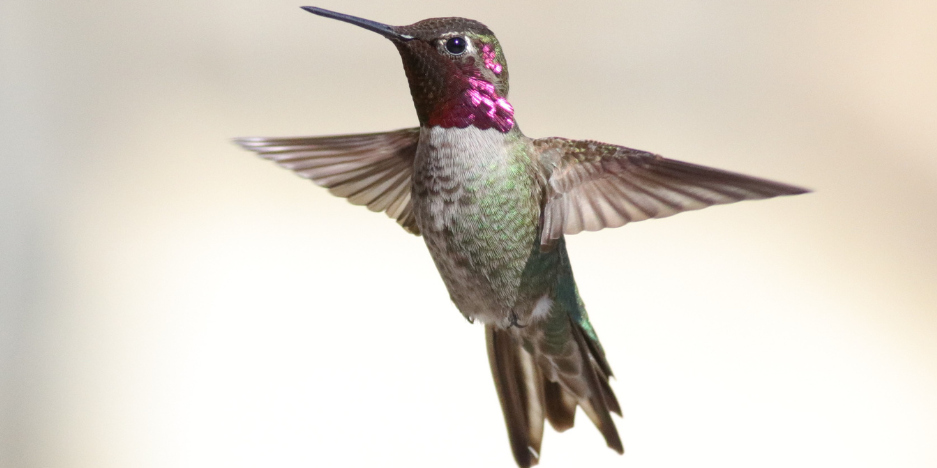
The Resident Hummingbird of Southern California
Anna's Hummingbird (Calypte anna) is a year-round resident in Southern California, adding a splash of colour and vitality to gardens, parks, and wild spaces alike. Named after Anna Masséna, Duchess of Rivoli, these tiny birds are easily recognizable by their brilliant emerald feathers and, in males, a dazzling rose-pink throat patch that glows in the sunlight.
In Ojai, we found these hummingbirds to be particularly abundant. The Mediterranean climate and diverse flora of the region provide an ideal habitat for these birds, offering a year-round supply of nectar-rich flowers and small insects that make up their diet.
The Science Behind the Hummingbird Flight
As we watched the Anna's Hummingbirds flit about, it was impossible not to be amazed by their aerial prowess. These tiny birds can hover, fly backwards, and even upside down – feats that are unmatched in the avian world.
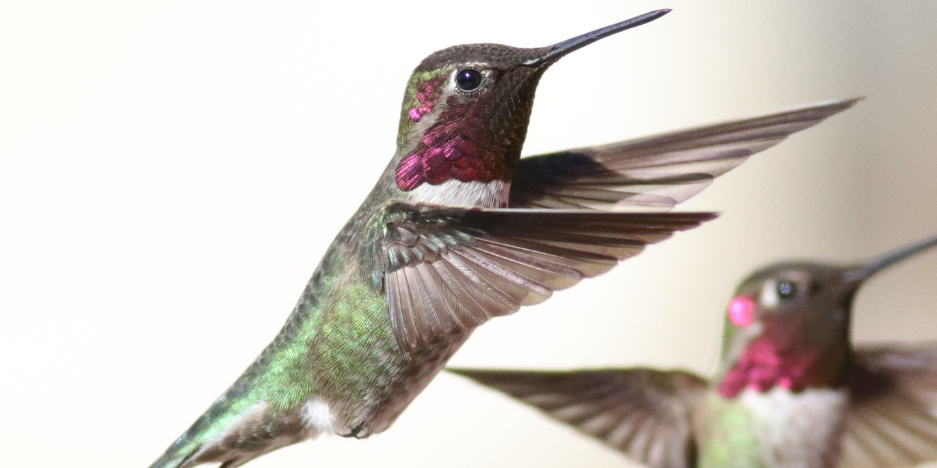
The secret to their extraordinary flight lies in their unique wing structure and musculature. Hummingbirds' wings are attached to their body only at the shoulder joint, allowing for a full 180-degree rotation. This, combined with a figure-eight wing motion, enables them to generate lift on both the forward and backward strokes, resulting in their signature hovering ability.
Their flight is also incredibly energy-intensive. A hummingbird's heart can beat up to 1,260 times per minute during flight, and they consume about half their body weight in nectar each day to fuel their high-energy lifestyle. To conserve energy at night, they enter a state of torpor, significantly lowering their body temperature and metabolic rate.
During our time in Ojai, we observed the Anna's Hummingbirds feeding primarily on nectar from a variety of flowers, including salvias, fuchsias, and native California plants. Their long, specialized bills and extendable, forked tongues allow them to reach deep into flowers to extract nectar.
Interestingly, these birds also supplement their diet with small insects and spiders, which provide essential proteins. We were fortunate enough to witness a hummingbird catching tiny gnats mid-air, showcasing their exceptional agility and keen eyesight.
Hummingbirds in History, Legend and Culture
Hummingbirds have long captivated human imagination and feature prominently in various cultures' legends and folklore. In Native American traditions, hummingbirds are often seen as healers or bringers of love, while Aztec legends associate them with rebirth and warriors' souls.
In modern culture, these tiny birds continue to symbolize joy, adaptability, and resilience. Their ability to hover and fly backwards has inspired countless metaphors in literature and poetry, representing the idea of finding sweetness in life and the importance of living in the present moment.
The Challenge of Photographing Hummingbirds
Capturing these fascinating creatures on camera proved to be both exhilarating and challenging. The primary difficulty lies in their incredible speed – a hummingbird's wings can beat up to 50 times per second during normal flight and even faster during courtship displays.
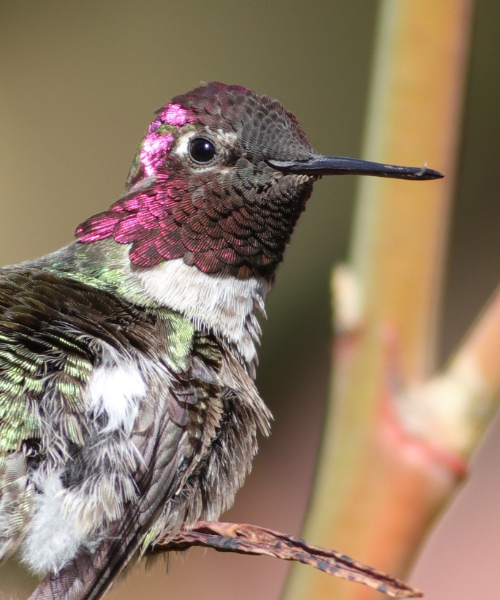
To freeze this rapid wing movement, we needed to use extremely fast shutter speeds, often 1/4000th of a second or faster. This requires ample light, which thankfully, the sunny Southern California climate provided in abundance.
During our shoot in Ojai, Jeff and I experimented with various techniques and honed our skills in high-speed photography.
Photography Tips for Capturing Hummingbirds
For those looking to photograph these avian acrobats, here are some tips based on our experience in Ojai:
1. Use a fast shutter speed: As mentioned, aim for at least 1/4000th of a second to freeze wing motion.
2. Increase ISO: To achieve fast shutter speeds, you may need to increase your ISO. Modern cameras can produce clean images at ISO 1600 or even higher.
3. Use a long lens: A telephoto lens (200mm or longer) allows you to keep a respectful distance while still getting close-up shots. These pictures were shot on Jeff’s 300mm prime lens by Canon fitted to my humble 80D camera.
4. Pre-focus: Set your focus on a flower or feeder where hummingbirds frequently visit. This allows you to react quickly when a bird appears.
5. Use burst mode: Hummingbirds move quickly, so taking a rapid series of shots increases your chances of capturing the perfect moment.
6. Be patient: Hummingbirds are creatures of habit. Once you find a favoured feeding spot, wait quietly, and they will likely return.
As the sun began to rise high over the Ojai Valley, Jeff and I packed up our gear, feeling a sense of accomplishment and awe. The Anna's Hummingbird, with its vibrant beauty and remarkable abilities, had provided us with a day of photographic challenges and rewards that we won't soon forget.
For anyone visiting Southern California, I highly recommend taking the time to observe and photograph these extraordinary birds. Whether you're an experienced wildlife photographer or simply an admirer of nature's wonders, the Anna's Hummingbird offers a unique opportunity to witness and capture a truly remarkable species in flight.
